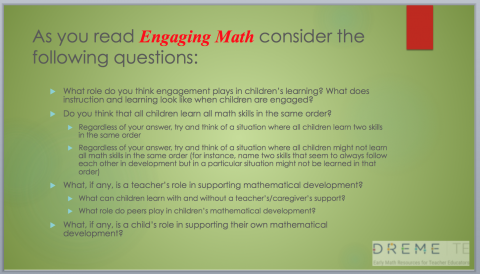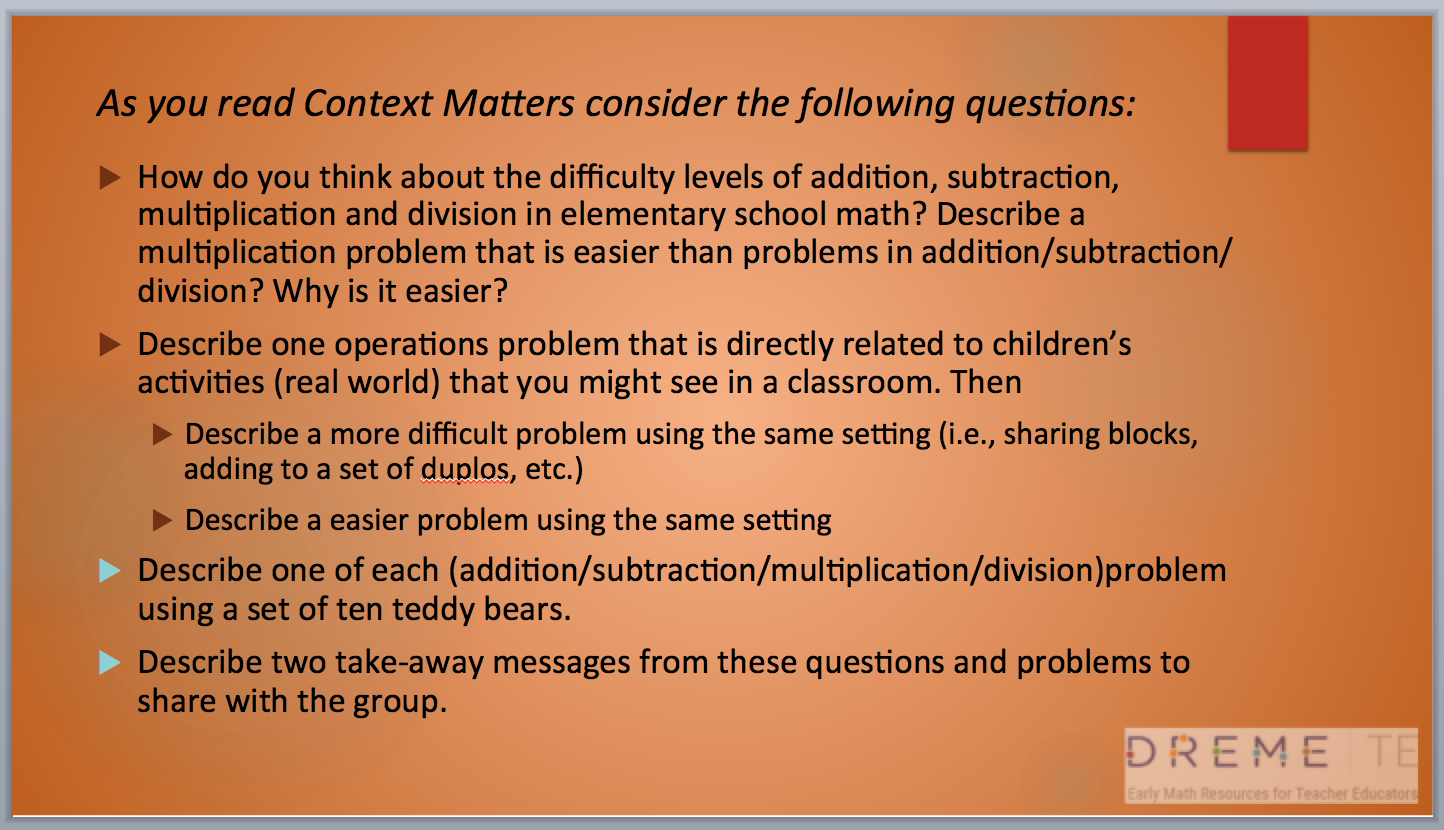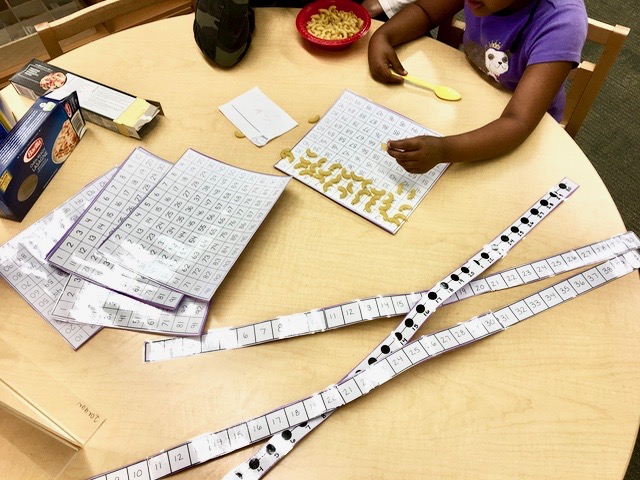This activity addresses beliefs and attitudes about mathematics teaching and learning in the early childhood classroom. Although unseen, beliefs and attitudes directly affect how teachers support mathematical development in their classrooms. This activity helps teachers examine their own beliefs and practices concerning the roles of children and teachers in the process of learning.
Activity for Teacher Educators
This activity begins with participants reading Engaging Mathematics. This can be assigned as homework prior to the session, or read in the session before starting the activity. This activity can be done with or without the accompanying worksheet and PowerPoint slide. Participants should be provided with the questions before reading Engaging Mathematics. Ask them to think about the questions as they read.
Table talk
Ask the participants to spend some time thinking about their answers to these questions (if using the worksheet, they can jot down their thoughts) prior to discussing the questions in their group.
Group share
Call on groups to share their answers with the class. Participants will be probably be on a wide spectrum of beliefs about the role of the teacher in children's mathematical development. Allowing them to talk in a non-judgmental environment can set the stage for later conversations. Their answers will help you understand more about what sort of support they will need to facilitate mathematical development in their classrooms.





